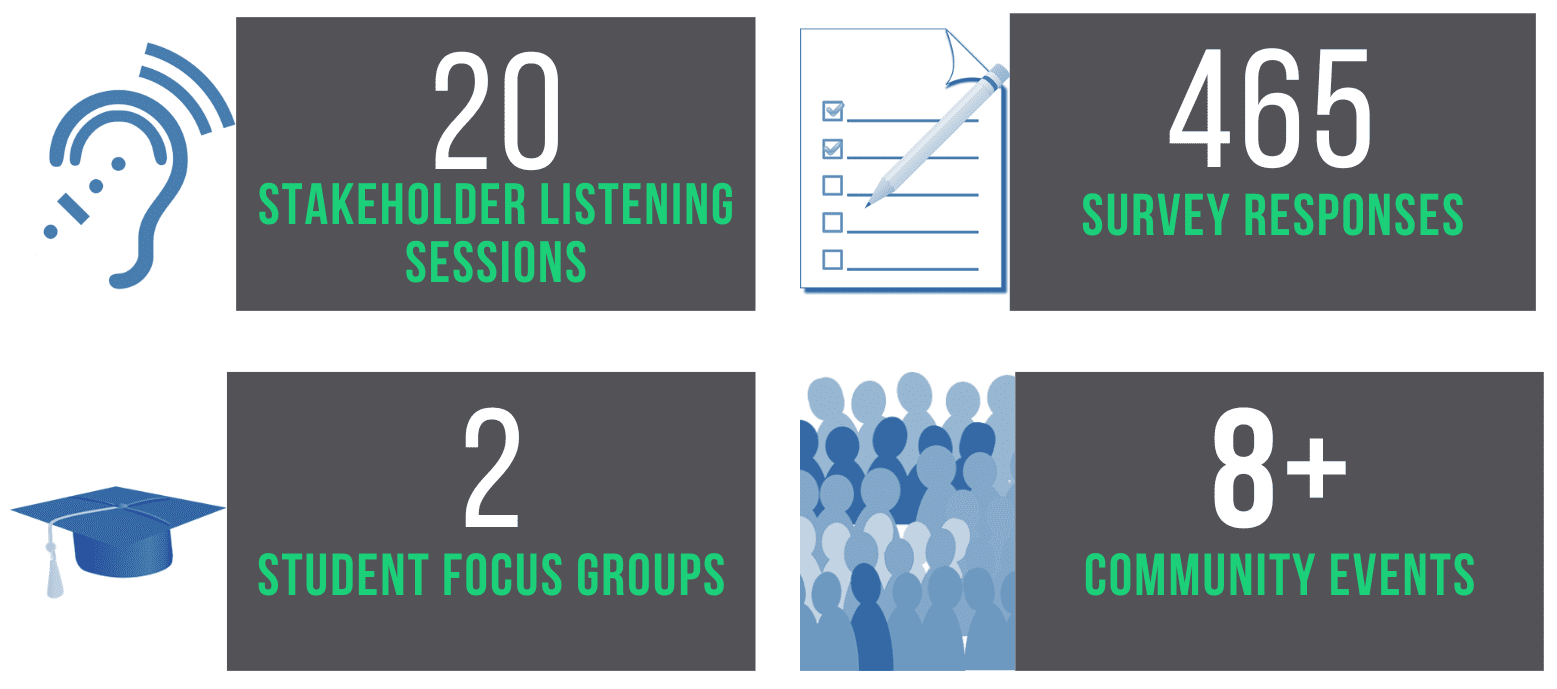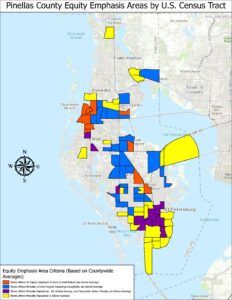
What is Racial Equity?
Racial equity is realized when race can no longer be used to predict life outcomes, and outcomes for all groups are improved.
The Equity Action Plan
Our goal is to incorporate equity into our work and practices as an agency, so that we may fulfill our mission of aligning resources and plans which achieve a compelling vision for Pinellas County and all its individual communities and surrounding region, in a way that is inclusionary and equitable for all.
Ensuring equitable outcomes requires commitment. In March 2022, the Forward Pinellas Board was presented with and unanimously approved the Equity Assessment Action Plan.
We are moving forward with the following agency goals and objectives:
Project Contact: Nousheen Rahman
Email: nrahman@forwardpinellas.org
Phone: 727-464-5679
Increase community voice for historically excluded communities
Part of a lack of opportunity comes from a lack of ability to participate. We learned from our conversations with community members that there is not a lack of willingness, but a lack of accessibility to political voice and influence. We aim to change that.
Build communities of opportunity
In order to continue building a county in which people not only survive, but thrive, it is important for us to create strategic opportunities across the county. Examples include strengthened public-private partnerships, further incentivizing affordable housing, especially in the current housing crises, and funding more safety programs.
Develop equitable and transportation options to employment, education and other necessities
Our assessment of our various equity emphasis areas showed us that many people have inequitable access to resources across the county, contributing to those lack of opportunities. As we guide and make transportation and land use planning decisions in our work, we must increase these opportunities and close the gap.
Strengthen awareness
Part of continuing this work means raising awareness for it throughout the county. While we are committed to this work, we can only succeed in it through collaboration with our partners across the county.
About The Equity Assessment
Throughout 2020 and 2021, Forward Pinellas conducted an equity assessment of its agency operations and planning activities. The goal was to ensure that its mission to “provide leadership to align resources and plans that help to achieve a compelling vision for Pinellas County, our individual communities and our region” is both inclusionary and equitable. As part of this assessment, Forward Pinellas conducted research, stakeholder engagement, and analysis for the development of a forward-looking strategic plan to enhance equity within Forward Pinellas staff, governance and committee structure, as well as Forward Pinellas work products. The equity assessment researched the systems, policies, and practices that have resulted in inequity, particularly among ethnic minorities, in Pinellas County, and developed a series of actions to ensure that our work as the countywide planning agency is inclusive and results in equitable outcomes for the entire community.
EQUITY ASSESSMENT PROCESS



WHAT ELSE DID WE LOOK AT?
The Equity Emphasis Map is a vital facet of the Equity Assessment as it serves as documentation of existing census data on households representing minority, low-income, limited English speaking and no vehicle statuses. This data will be an essential tool for our analysis, research, outreach and advocacy.
This map details the equity emphasis areas within Pinellas County by U.S. Census Tract. Equity emphasis areas include areas with high minority populations, high populations of minorities without vehicle access due to poverty, high populations of limited English-speaking households, or areas where all of those criteria are met. These criteria are based on county-wide averages previously identified through our Environmental Justice Analysis.
Using the Equity Emphasis Map, we also conducted an internal analysis of our own work, which included statistical analyses of transportation activity and funding of the county’s most vulnerable areas. We found that approximately 70 percent of the county’s High Injury Network (which are areas with high amounts of pedestrian, bicyclist and automobile crashes and incidents) are located in the equity emphasis area, which only comprises approximately 32 percent of the county. This tells us that there are distinct areas of the county which are disproportionately lacking in safe transportation options and safety measures.







